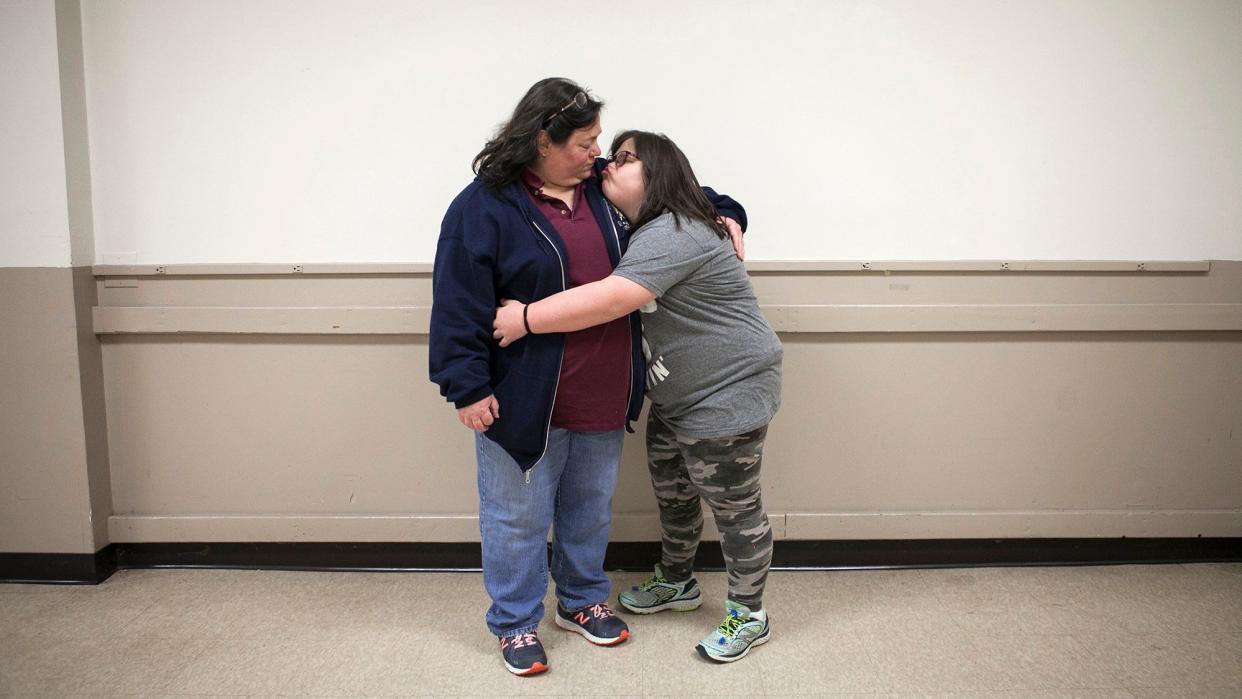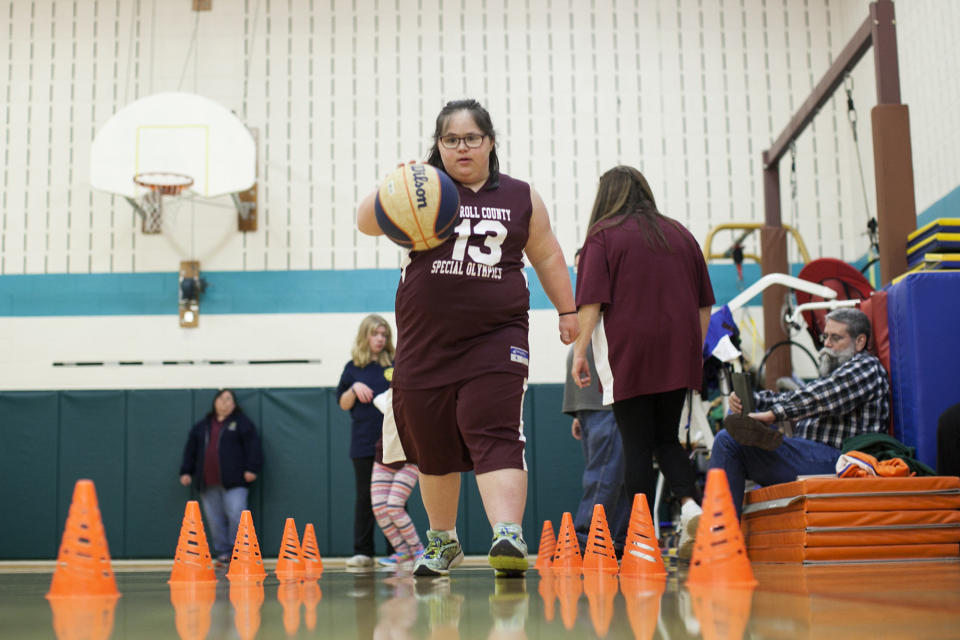For Students With Disabilities, Quality Of Education Can Depend On ZIP Code

At the start of every school year, Jawanda Mast met with administrators at her daughter Rachel’s school. Every year, it was the same fight. Teachers wanted to separate Rachel ― who has Down syndrome ― from her peers without disabilities, and put her in a segregated class. Mast always pushed back. Isolating her daughter from her peers would have a devastating effect. Rachel was vivacious and social, and loved to be with her friends.
After years of having the same fight over and over, Mast made a hard choice right before Rachel was set to begin third grade. Mast and her family decided to leave their home in Tennessee for Kansas, where they could put Rachel into a school system that offered a better education and would include her in an integrated classroom. The family also made the move due to Mast’s husband’s job, but the education issues in Tennessee were a key factor.
“I was like, how on earth am I going to do this for 10 more years,” Mast said.
As a child with Down syndrome, Rachel is one of the small number of public school students in America with an intellectual disability. These children made up less than 2 percent of public school students in every state during the 2015-2016 school year. Experts estimate that up to 90 percent of students with disabilities can graduate high school meeting the same academic expectations as their peers. But parents and advocates say the other 10 percent are often assumed to be less capable than they are.
Just a few decades ago, students with disabilities faced high rates of institutionalization and were rarely included in typical classroom settings. In 1975, the Individuals With Disabilities Education Act ― originally called the Education for All Handicapped Children’s Act ― enshrined into law these students’ right to an appropriate public education.
Part of IDEA’s framework requires parents to advocate hard to get what they see as their children’s needs met. Often, school districts have different ideas about what would best serve a child. Decades later, this is still the case.
Sometimes teachers lack the best training for dealing with a student’s specific disability. Other times, administrators have low expectations for what these students can achieve.
While IDEA says students with disabilities should learn in the least restrictive environment ― meaning with non-disabled peers ― parents still often find themselves fighting hard, expensive battles for their child to be included.
Success can be a matter of luck. But it also depends on time and resources. For Mast’s daughter, those two factors were important.

The district in Tennessee where Rachel previously went to school never had a child with Down syndrome graduate with a high school diploma, Mast said. (Rachel’s elementary school was part of Shelby County Schools. Since she left, it split off and is now part of another district, Bartlett Municipal School District. Both districts deferred to the other for comment.)
Now, Rachel is 18 and set to graduate in May from her district in Olathe, Kansas. She will receive a full, regular diploma ― Kansas does not have diplomas specifically for students with disabilities ― and has plans to start at a community college or go to a four-year college with a special program for students with special needs.
The move to Kansas didn’t solve everything. Mast still had to fight for resources for her daughter. She said she is “exhausted from doing all I had to do to make sure she could be included.” But overall, it has been a positive experience. Rachel spends all day in general-education classrooms with her peers without disabilities, aside from a resource class where she gets special attention.
Mast isn’t alone in feeling that she had to move in order to get the proper support for her child. HuffPost spoke to four families of children with severe disabilities who say they either moved in order to get their child better services, or allowed their children’s educational needs to factor into a move. They all ended up in places where they feel their child’s unique and individual needs are met.
It’s a luxury not every family has.
Maryland parent Marjorie Guldan has a 14-year-old daughter with Down syndrome. She fought for years and went to court to stop her district from giving her daughter certain assessments.
The district needed these assessments in order to push Guldan’s daughter, Rebecca, into a graduation track specifically for students with disabilities. This track allows students to graduate with a certificate instead of a regular diploma. High school certificates don’t carry the same weight as diplomas ― they are not recognized by postsecondary institutions. Twenty-four states have diploma paths specifically for students with disabilities.

A judge eventually sided with the district, allowing it to give Rebecca the assessments that would make her eligible for the certificate track. Guldan said officials started pushing for this path when Rebecca was only in the third grade.
“My argument all along has been lets just keep pushing her and see where we get. If in the end diploma is not possible then I will happily accept the certificate,” Guldan said. “What I resented was, from third grade on, every year them saying she really should be on certificate, she can’t handle the grade-level work.”
District officials did not respond to requests for comment.
Guldan’s daughter now only spends a few classes a day with her peers without disabilities. The results have been mixed. Rebecca’s behavior has improved because she is less challenged by the curriculum and doesn’t act out as much in frustration. On the other hand, Guldan wants her daughter to be challenged.
“I fully expect her to be able to work in the community. Obviously she’s not going to be a lawyer or a doctor, but there are plenty of opportunities out there that we can be working towards preparing her for that are going to require high expectations,” said Guldan, whose other daughter graduated from the district.
Like Mast, Guldan considered taking her daughter out of the district to put her in a school that was more dedicated to inclusion. But for Guldan’s family ― like so many others ― picking up and leaving is simply not an option. It would be a financial burden, and Guldan has come to rely on her neighbors for help looking after Rebecca. They have developed a strong community. And Guldan’s other daughter loves her childhood home.
“Even I don’t know that fighting for a diploma is worth all the upheaval,” Guldan said.
But for families of students with disabilities, it’s an unfortunate dilemma that they’re sometimes forced to face.

Experts say these battles play out all the time. Ricki Sabia, senior policy adviser at the National Down Syndrome Congress, said she sees tremendous variability in how students are treated based place and situation.
“Even within a district can vary from school to school to school,” Sabia said.
Sabia has seen families move to a specific district to take advantage of its inclusive options, only to have the school principal leave and the culture change.
“People keep saying education shouldn’t depend on your ZIP code. It’s thrown around a lot in terms of kids in poverty, but it’s also true for kids with disabilities. It shouldn’t depend on your ZIP code,” she said.
This story was produced by The Hechinger Report, a nonprofit, independent news organization focused on inequality and innovation in education, in partnership with HuffPost. Read the whole series, “Willing, Able and Forgotten: How High Schools Fail Special Ed Students,” here. Sign up for our newsletter.
Love HuffPost? Become a founding member of HuffPost Plus today.
This article originally appeared on HuffPost.
